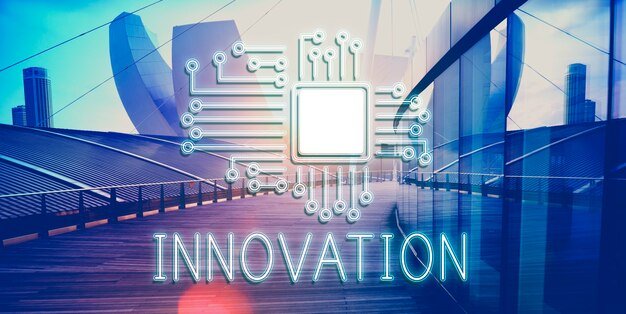In the ever-evolving landscape of technology and innovation, Orformi has emerged as a transformative concept reshaping industries and fostering creativity. Derived from the Latin words “ordo” (order) and “forma” (form), Orformi emphasizes the synthesis of structure and adaptability. Its principles have gained traction in design, engineering, and business, as organizations seek solutions that are both innovative and sustainable. This article delves into what Orformi is, its foundational principles, and its profound impact on various sectors.
Understanding Orformi
At its core, Orformi is a design philosophy and methodology that balances form and function to create systems, products, or strategies that are efficient, scalable, and adaptable. Unlike traditional linear design approaches, Orformi embraces complexity, acknowledging that modern challenges require dynamic and interconnected solutions.
Orformi isn’t confined to a single industry; its principles can be applied across diverse domains, from architecture and product design to software development and business strategy. The unifying thread is its focus on integrating order (a structured approach) with form (aesthetic and functional adaptability) to achieve optimal outcomes.
Principles of Orformi
- Adaptive Structuring
Orformi emphasizes the importance of creating systems that can adapt to change without compromising integrity. This is especially crucial in industries like software development, where evolving user needs and technological advancements demand constant updates. - Holistic Integration
Instead of isolating components, Orformi promotes holistic thinking. Every element of a system or design interacts seamlessly, ensuring that the whole is greater than the sum of its parts. This principle is particularly valuable in architecture and urban planning, where buildings must harmonize with their surroundings. - Sustainability and Efficiency
Efficiency lies at the heart of Orformi. The methodology prioritizes designs and processes that minimize waste, whether in materials, energy, or time. This aligns closely with the global push toward sustainability, making Orformi highly relevant in today’s environmental and economic contexts. - Iterative Innovation
Orformi is not about perfection on the first try; it encourages iterative design and continuous improvement. By embracing feedback and experimentation, creators can refine their work to better meet user needs and adapt to unforeseen challenges. - User-Centric Approach
Whether applied in product design or business strategy, Orformi always considers the end user’s experience. It seeks to deliver solutions that are intuitive, accessible, and aligned with real-world requirements.
Applications of Orformi
1. Architecture and Urban Design
In architecture, Orformi has been instrumental in the creation of buildings that blend aesthetics with functionality. Architects employing principles focus on structures that are not only visually appealing but also energy-efficient, adaptable to different uses, and in harmony with their environment.
For example, modular construction techniques—where building components are prefabricated and then assembled—are a manifestation of Orformi. These methods reduce construction waste, save time, and offer flexibility for future modifications.
Product Development
The world of product design has embraced to create items that are both practical and innovative. Consider the smartphone industry: manufacturers aim to deliver devices that are sleek, user-friendly, and packed with features, all while ensuring they are durable and easily upgradable.
Orformi principles guide designers to think beyond the immediate use case, envisioning products that can evolve with consumer needs and technological advancements.
3. Software and Technology
In software development, provides a framework for building adaptable and efficient systems. Agile methodologies and DevOps practices, which focus on iterative improvement and seamless integration, align closely with Orformi principles. This ensures that applications remain responsive to user feedback and technological shifts.
Cloud computing is another area where shines. Cloud-based solutions are inherently scalable and efficient, embodying the adaptability and sustainability that advocates.
4. Business Strategy
Orformi is increasingly influencing how businesses approach strategy and operations. Companies that adopt its principles prioritize resilience and flexibility, enabling them to navigate market uncertainties and capitalize on opportunities.
For instance, the shift toward hybrid work models during the COVID-19 pandemic reflects Orformi thinking. innovation restructured operations to ensure both productivity and employee well-being, illustrating the adaptability that champions.
Benefits of Orformi
The adoption of Orformi offers numerous advantages:
- Enhanced Efficiency: By minimizing resource wastage, processes deliver cost savings and environmental benefits.
- Resilience: Systems designed with principles are better equipped to handle disruptions, whether due to market shifts or technological changes.
- Innovation: The iterative nature of fosters a culture of experimentation, leading to breakthrough ideas and solutions.
- User Satisfaction: A focus on the end user ensures that products and systems are not only functional but also enjoyable to use.
Challenges in Implementation
While Orformi offers compelling benefits, adopting its principles can be challenging. Organizations may face resistance to change, particularly if they are accustomed to linear or siloed approaches. Additionally, the complexity of holistic integration requires expertise and collaboration across disciplines.
To overcome these hurdles, organizations can start small, applying Orformi principles to pilot projects before scaling up. Training and leadership buy-in are also critical to fostering a culture that embraces .
The Future of Orformi
As global challenges become more complex, the demand for efficient, sustainable, and adaptable solutions will continue to grow. Orformi is well-positioned to meet this demand, offering a versatile framework for innovation across industries.
In the coming years, advancements in technology—such as artificial intelligence, robotics, and renewable energy—are likely to amplify the impact of Orformi. These technologies, when developed and deployed through an lens, can address pressing issues like climate change, urbanization, and digital transformation.
Conclusion
represents a paradigm shift in design and innovation. By balancing structure with adaptability, it offers a pathway to creating systems and solutions that are not only efficient and resilient but also deeply aligned with human and environmental needs. As industries and individuals continue to embrace its principles, promises to drive meaningful progress in the years to come.










